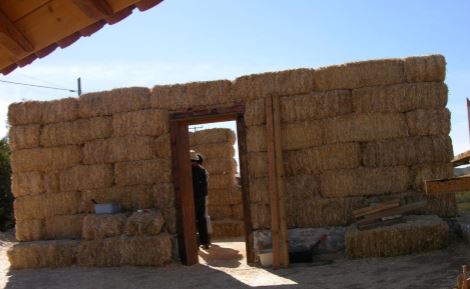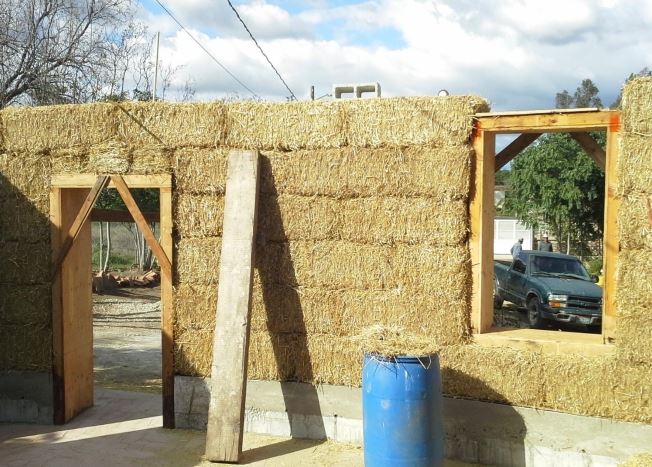Building Naturally at the Ranch
by Tina Cooper
One of the wonderful things about Project Mexico is the diversity of talents and gifts that God brings our way through our staff and missionaries as they work in synergy with the local Mexican community.
When we strive to dwell in community with one another, we see how each person’s offering contributes to our developing vision. Whether producing our own naturally made, environmentally friendly and vibrant limewash paint by iLia Anossov. Or our most recent venture into sustainable building. We see our ministry developing in fresh and creative ways when we allow space to bring forth ideas and collaborate together.
In partnership with OCF during the Spring break build session (March 11-16th, 2019) we will be building the new tiendita (Ranch store) using the straw-bale natural building technique. Natural building methods like straw-bale, cob, adobe, light straw clay and many similar methods can be traced back to ancient times. The word “Adobe” means “mud-brick” and originated in 2000 BC in Ancient Egypt. In Omaha, Nebraska you can find houses built with this method that are over 100 years old and still standing!
Thomas Ingram, a Project Mexico missionary who specializes in developing agriculture on the ranch, recently visited a Montessori ecological school in Tecate, México. He met with established teacher and naturalist, Cesar Valdarama, who created a native plant palette for the ranch at Project Mexico. With his love for botany and ecology, Cesar has researched the biodiversity of native plants and their benefits for human development and the entire ecosystem in which we live. While there, Thomas was intrigued by buildings on the site that were made of natural building materials. The buildings were the work of the architect, Tonatiuh Magaña.
Thomas and homebuilding coordinator, Oliver Fahling, explored the advantages of building with natural materials. This construction had the potential to become a mainstay of our ministry. They contacted Tonatiuh and the proof-of-concept project of building our new tiendita using the straw bale method at Project Mexico was proposed. Tonatiuh agreed to lead the build! The project was approved by the rest of the Project Mexico team.
Tonatiuh, who holds a Masters degree in Architecture specializes in construction with natural materials. He began building natural structures about 12 years ago. Trained by international and national experts, he has worked on various ecological farm projects in South America. For the last five years, he has designed houses, cabins and educational spaces (such as the school in Tecate) made of straw bales, bajareque and Adobe. He chose to specialize as a natural builder because it allows him to leverage reusable materials and because he likes having the ability to build his own home. Likewise, Thomas who has some experience of cob building likes this approach because, “it allows for better stewardship of the environment.”
Aside from the benefits of using natural materials, these buildings have efficient insulation properties, reducing or even eliminating the cost of heating or cooling the home during winter and summer. Once they are very old, they can then be torn down and allowed to decompose into the ground without having to dispose of drywall or deal with any harmful chemicals.
It’s not just about sustainability for Thomas though, he also prefers the aesthetics of the natural built home stating, “You have the ability to make a natural building for the same cost or less than a conventional building while achieving a much better aesthetic value. These buildings look really nice when completed”.
Interestingly, the idea of using natural building methods are not new to the vision of Project Mexico. Greg Yova, Project Mexico’s founder had similar objectives from the very beginning of the ministry. Greg was intentional in establishing an environment on the ranch that was self-sustaining in a time when sustainability wasn’t as highly valued or practiced. Alongside staff that had an interest in gardening they recognized the importance of growing plants that are native to the land so that they could thrive and use less resources. Greg and his staff created a plan to assess which plants would do well on the ranch, paying attention to sun exposure and shade. From the outset, grey water (water from bathroom sinks, showers, tubs, and washing machines) has been used to water the plants of the ranch instead of being processed through the septic system.
Pigs were also farmed and fed discarded food from local restaurants. The pig waste was then used for soil fertilization. Utilizing resources in different ways through their life cycle was something Greg valued and part of what he considered to be good stewardship of the earth and its resources.
The straw-bale method was also researched as a viable option in the early days of the Project Mexico homebuilding ministry. The team were much in favor of this technique for building their homes because of the numerous benefits including the acquisition of materials locally instead of internationally imported lumbar. However, the lack of expertise at a time when the ministry was still being established meant that it would have been a challenging road to take.
We’re thrilled to announce preparations for this exciting new endeavour are underway! During our Spring build session, we’ll be building the new Tiendita using the straw bale method. First, we must raise funds and recruit volunteers. You can help bring this to life this March! College students are encouraged to register through OCF. Parish groups of all ages are invited to register as well as individuals.
We have also opened up our Spring building schedule! Parish groups or individuals can provide a great service to our ministry and help Project Mexico on many different projects.
Day trips and week trips are available!
If you believe in this venture but can’t come and build with us your contribution to our Tiendita campaign. Your generous contribution will help us bring the project to fruition.





